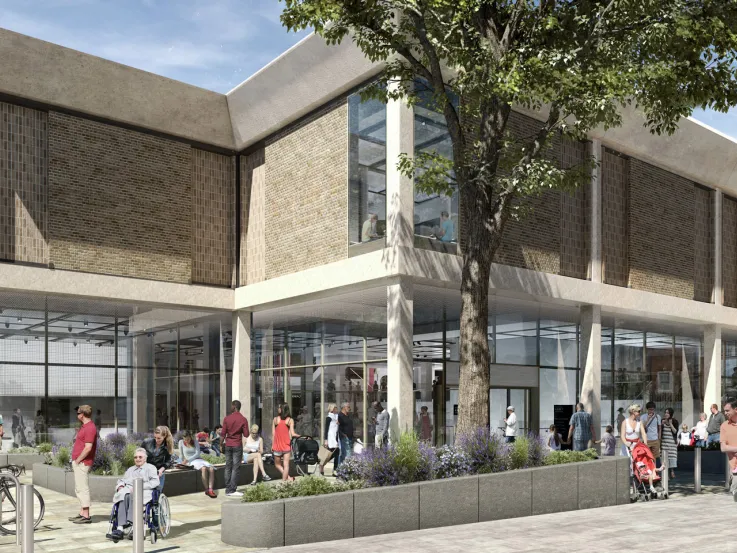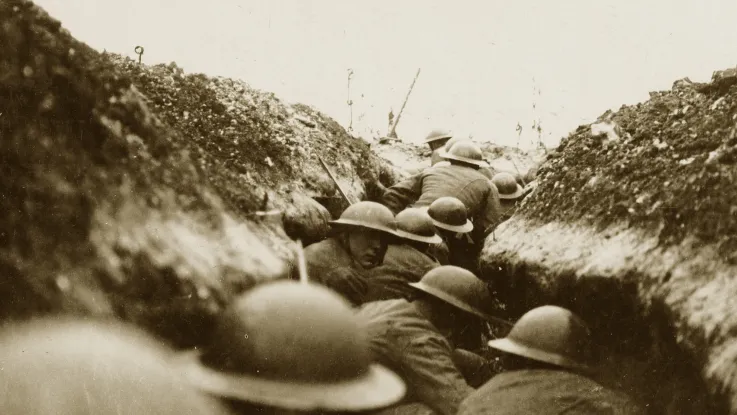Berkshire soldier’s photographs reveal Spring Offensive struggles
One hundred years ago in April 1918, Acting Lieutenant-Colonel Bowcher Clarke was commanding the 4th Battalion, The Worcestershire Regiment, when the German attack in Flanders began. The photographs he took during this period of bitter fighting shed light on a struggle that helped decide the war on the Western Front.
Although the German Spring Offensive of March 1918 made extensive gains along the Somme River region, by the first week of April their advance began to run out of steam and they were held east of Amiens. The Germans shifted their attention north to Flanders, aiming to capture Ypres and the surrounding high ground around Messines in what became Operation Georgette (or the Fourth Battle of Ypres, 7-29 April 1918). The hope was they would then push the British back against their ports along the English Channel and force them into a corner.
On 9 April 1918, following a two-day bombardment, 14 German divisions attacked the British First and Second Armies along a 10-mile front. The ferocious German advance quickly drove the Allies back, punching a hole 3.5 miles wide through their lines. The German storm troops were supported by bombardments that included mustard and phosgene gas, alongside high explosives.
Clarke’s battalion was transported to new positions outside Bailleul near Ypres. Once there, the 4th Worcestershire held their ground stubbornly, helping to beat off successive attacks until relieved on 15 April. The line of trenches they occupied was part of the last prepared system of defence, and several of Clarke’s photographs show his men strengthening their makeshift positions during the breaks in the fighting.
The Germans continued to advance, throwing in all their available reserves. Though they took several key targets, including Bailleul, the attack began to stall with the arrival of French reinforcements. The British defence positions were also better prepared and more tenacious than those at the Somme. As a result, the Germans had advanced only 7 miles by the time the operation was closed down on 29 April.
The small gains had cost the Germans dearly in terms of men lost with around 109,000 soldiers killed, wounded or missing. Allied losses were even higher, but the arrival of thousands of American troops boosted their manpower.
The Germans could not afford such losses, despite men still arriving from the Eastern Front. They had used up most of their reserves in a last desperate effort to break the Allied line and gain the Channel ports.
Notes to editors
For more information please contact Kelly Scandone on marketing@nam.ac.uk or 020 7881 2433
About Captain Bowcher Clarke:
Bowcher Campbell Senhouse Clarke (1882-1969) was born in London. Educated at Wellington College and Sandhurst he was gazetted as second lieutenant to the 4th (Militia) Battalion, The Worcestershire Regiment and promoted to lieutenant in 1900. In 1901, he went to South Africa during the Boer War (1899-1902). Clarke was promoted to lieutenant in 1906 and in 1912 he was appointed the 2nd Battalion’s adjutant.
In 1913, Clarke returned to England and was stationed at Aldershot until the outbreak of war in August 1914 when he proceeded to France. In September 1914 he was promoted captain.
In February 1915, Clarke received a brevet-majority for distinguished service in the field, and was promoted to full major in May 1917. Later that year, he was promoted to acting lieutenant-colonel and assumed command of the 4th Battalion of the Worcestershire until September 1918. For his war services Clarke was three times Mentioned in Despatches and awarded two Distinguished Service Orders.
In the 1930s, he resided at Fleetwood, Crowthorne, Berkshire, with his wife Margaret Isabel Clarke. After the outbreak of the Second World War in 1939, he took command of the North Aldershot District, but retired from active service in 1942.
Brigadier Clarke died at Cheltenham on 16 January 1969 and is commemorated by a memorial plaque in St George’s Chapel at Worcester Cathedral.
National Army Museum
The National Army Museum is the leading authority on the history of the British Army. Founded in 1960 by Royal Charter and established for the purpose of collecting, preserving and exhibiting objects and records relating to the Land Forces of the British Crown it is a museum that moves, inspires, challenges, educates and entertains.
The Museum seeks to tell the story of the British Army, the personal experiences of the soldiers who have served in it and to connect the British public and its army demonstrating how the role of the army and its actions are still relevant today.
Heritage Lottery Fund
Thanks to National Lottery players, we invest money to help people across the UK explore, enjoy and protect the heritage they care about - from the archaeology under our feet to the historic parks and buildings we love, from precious memories and collections to rare wildlife.
For more information, please contact Katie Owen, HLF press office on Tel: (020) 7591 6036 out of hours mobile: 07973 613820.



